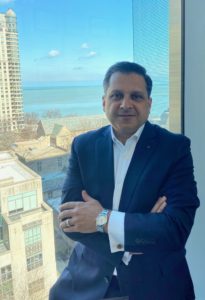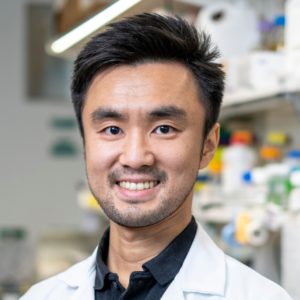
Northwestern Medicine investigators have discovered novel mechanisms underlying a specific transcription factor essential for elongation control, the process of synthesizing RNA from DNA, according to findings published in Molecular Cell.
“This is another superb molecular study by Dr. Yuki Aoi whom has been systematically dissecting transcription and transcription elongation control inside the cells using the outstanding methods he has developed,” Ali Shilatifard, PhD, the Robert Francis Furchgott Professor, chair of Biochemistry and Molecular Genetics, was senior author of the study.
Gene expression is regulated at the level of transcription elongation control, which is driven by the multiprotein complex called RNA polymerase II. During transcription elongation, RNA polymerase II travels along one strand of DNA and copies genetic information to a strand of RNA. When this process is upset, diseases such as cancer or neurological disorders can develop.
For RNA polymerase II to control transcription elongation, different transcription factors must bind to or dissociate from RNA polymerase II. But precisely how these transcription factors help RNA polymerase II regulate elongation inside the cells have remained elusive.
“This elongation state is very important for reading the genetic information in every single cell in our bodies, but its regulation inside the cells is extremely complex. So, we are trying to understand how RNA polymerase II regulates elongation inside the cell using cellular and molecular system that we have developed,” said Yuki Aoi, PhD, a postdoctoral fellow in the Shilatifard laboratory and lead author of the study.

For example, previous work by Aoi from Shilatifard laboratory revealed that the presence of the protein SPT5 serves as a checkpoint to determine whether a polymerase complex can proceed down the length of DNA or is instead destroyed.
In the current study, the investigators used a new experimental method called the auxin-inducible degradation system to disrupt the role of another elongation transcription factor, SPT6, in human colon cancer cell lines. This method allows immediate observation of the effects of depleting the role of SPT6 during the transcription elongation process.
They discovered that SPT6 plays multiple roles in regulating the elongation stage of transcription: SPT6 regulates the very early stage of elongation, called promoter-proximal pausing. Interestingly, in shorter genes, SPT6 is unnecessary for the rest of this elongation stage, while in longer genes, SPT6 is essential.
They found that SPT6 recruits the PAF1 complex (PAF1C) to RNA polymerase II to support and complete transcription elongation. To do this, SPT6 removes a protein complex called NELF from the genome, replacing it with PAF1C during what the investigators call an “NELF-PAF1C exchange.”
When SPT6 is lost, RNA polymerase II fails to recruit PAF1C, while RNA polymerase II remains bound to NELF. Surprisingly, this forced binding of NELF does not alter the regulation of RNA polymerase II elongation. The recruitment of PAF1C is essential for RNA polymerase II to be released into genes with high processivity and for transcription elongation to be competed correctly, according to the authors.
Co-authors include Neil Kelleher, PhD, professor of Biochemistry and Molecular Genetics and director of the Chemistry of Life Processes Institute and Northwestern Proteomics.
Shilatifard and Kelleher are also members of the Robert H. Lurie Comprehensive Cancer Center of Northwestern University.
This work was supported by the JSPS Research Fellowship for Young Scientists, the Uehara Memorial Foundation Research Fellowship, National Cancer Institute Cancer Center Support Grant P30 CA060553, instrumentation award S10OD025194 from the National Institutes of Health’s Office of the Director, National Resource for Translational and Developmental Proteomics supported by P41 GM108569, and the National Cancer Institute grant R35CA197569.






